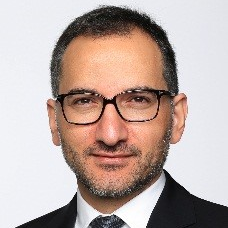Advances in Platelet-rich Fibrin for Bone Tissue Engineering
A special issue of Materials (ISSN 1996-1944). This special issue belongs to the section "Biomaterials".
Deadline for manuscript submissions: closed (31 August 2020) | Viewed by 6686
Special Issue Editor
Interests: cell culture; molecular biology; cell biology; biomaterials; tissue engineering; biocompatibility; molecular pathology; scaffolds
Special Issues, Collections and Topics in MDPI journals
Special Issue Information
Dear Colleagues,
The use of bioactive biomaterials in tissue engineering, especially platelet-rich fibrin (PRF), has gained increasing importance in the last few years. This special group of autologous and bioactive biomaterials provides signaling molecules, growth factors, and cytokines that support the regeneration process. Great efforts have been undertaken to understand the composition and bioactivity of differently prepared platelet-rich fibrin matrices and their interactions with cells. Recent studies have outlined the significance of the preparation protocol and the applied centrifugal force for the cellular content and structural characters of the resulting fibrin-based biomaterials. However, still little is known about the benefits and mechanisms of action of PRF in bone regeneration. Therefore, further research is essential to outline these aspects and provide additional scientific evidence in this field.
This Special Issue will provide an overview of different aspects related to Advances in platelet-rich fibrin for Bone Tissue Engineering, from the bench to the clinic. It is my pleasure to invite you to submit your work as systematic reviews, short communications, original studies addressing preclinical in vitro and in vivo work, and controlled clinical studies reporting preliminary clinical outcomes.
Prof. Dr. Shahram M. Ghanaati
Guest Editor
Manuscript Submission Information
Manuscripts should be submitted online at www.mdpi.com by registering and logging in to this website. Once you are registered, click here to go to the submission form. Manuscripts can be submitted until the deadline. All submissions that pass pre-check are peer-reviewed. Accepted papers will be published continuously in the journal (as soon as accepted) and will be listed together on the special issue website. Research articles, review articles as well as short communications are invited. For planned papers, a title and short abstract (about 100 words) can be sent to the Editorial Office for announcement on this website.
Submitted manuscripts should not have been published previously, nor be under consideration for publication elsewhere (except conference proceedings papers). All manuscripts are thoroughly refereed through a single-blind peer-review process. A guide for authors and other relevant information for submission of manuscripts is available on the Instructions for Authors page. Materials is an international peer-reviewed open access semimonthly journal published by MDPI.
Please visit the Instructions for Authors page before submitting a manuscript. The Article Processing Charge (APC) for publication in this open access journal is 2600 CHF (Swiss Francs). Submitted papers should be well formatted and use good English. Authors may use MDPI's English editing service prior to publication or during author revisions.
Keywords
- Platelet rich fibrin
- PRF
- Tissue engineering
- Bone regeneration
- Autologous bioactive materials






